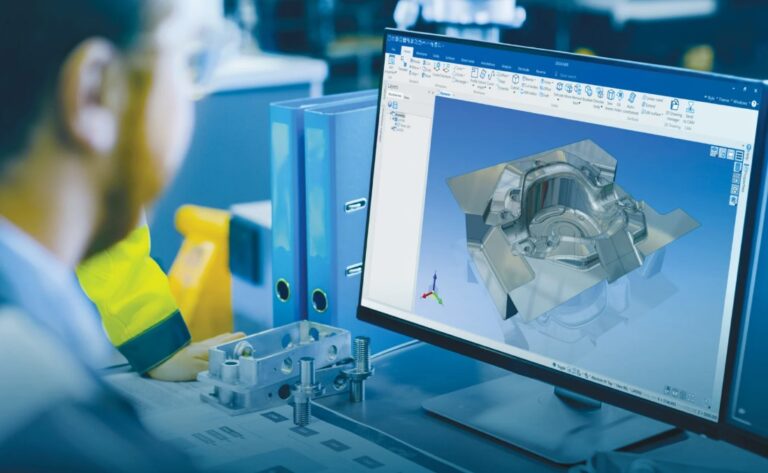A strong executive presence changes how people respond to you, how they trust you, and how they picture you inside a room where decisions get made. Plenty of professionals feel capable, yet their presence does not match their skill level.
That gap can slow promotions, shrink opportunities, and leave you feeling like your work speaks louder than your voice. A more grounded presence closes that gap.
Not by putting on a show, but by shaping behavior that signals clarity, composure, and steadiness.
You do not have to reinvent yourself. You just have to build habits that help others read you accurately. The guide below breaks the process into concrete moves you can start applying right away.
What Executive Presence Actually Signals

Executive presence is not about acting like a CEO. It is about how leaders assess you in real time.
Decision makers look for cues that tell them you can handle pressure, influence outcomes, and communicate without creating friction.
Leaders often look for patterns in communication, something you will recognize if you read the insights shared on the Ned Capital Blog.
A strong presence signals three things:
- You project steadiness, no matter who is in the room
- You communicate with clarity and directness
- You make decisions without hesitation or unnecessary noise
Those signals are built from behavior, not personality. You do not have to be the loudest, most charismatic, or most confident person in the group. You only need to project consistency and calm.
Build a Voice That Carries Without Dominating
Your voice sets the tone. Not the volume, but the structure, pacing, and intention behind your words. A presence-heavy voice holds space without forcing it.
Slow the Pace
Most professionals rush their sentences. It can happen when you want to show competence or when you do not want to overstep.
Slow speech gives your thoughts weight. Leaders lean in when someone is calm enough to pause, breathe, and choose one clear message.
Try this in your next meeting:
- Speak at a pace where you can take a breath mid-sentence
- Replace long explanations with one clear statement
- End sentences cleanly instead of trailing into qualifiers
Shorten Your Sentences
Long sentences bury clarity. Short sentences give direction. When you pair shorter sentences with a slower tempo, people instinctively trust you more.
Limit Fillers but Do Not Fear Them
You do not need perfect delivery. A filler here or there makes you sound like a real person. Aim for simplicity, not polish.
Use Body Language That Signals Control

Your posture, movement, and stillness send signals faster than your words.
Sit or Stand With Purpose
Set your feet flat. Lift your ribcage slightly. Keep shoulders relaxed. That posture conveys stability, which makes you appear decisive. No stiff chest. No rigid spine. Just grounded presence.
Keep Your Hands Visible
Hidden hands create tension. Leaders want to see hand movements because they help them track your intention. Keep them relaxed on the table or resting loosely in your lap.
Hold Eye Contact Long Enough
One to two seconds per person is enough. Any longer feels like a stare. Any shorter feels unsure.
Use Stillness Strategically
Too much movement gives away nerves. Stillness communicates composure. You do not need to freeze. Just pause your gestures when making a key point.
Strengthen Your Executive Vocabulary Without Sounding Stiff

A strong presence uses direct language. No fluff. No verbal padding. No loops of apology.
Here is a simple table to help you replace common weak phrasing with steady alternatives.
| Weak phrasing | Stronger option |
| I think maybe we could | The recommendation is |
| Sorry but I wanted to add | Adding one point |
| I am not sure but | Here is the data |
| We might want to consider | The next step is |
| I hope that makes sense | Let me clarify |
Short, confident phrasing signals that you can guide conversations rather than follow them.
Master the Way You Contribute in Meetings
Meetings act like a pressure test. Your presence is judged before you finish your first sentence.
Speak Early
The longer you wait, the harder it becomes to speak with confidence. You do not need to deliver a lecture. A simple comment within the first ten minutes helps you establish yourself.
Keep Contributions Tight
Make one point at a time. If you have three ideas, break them into three clean contributions instead of one long block.
Reference Data With Precision
Not numbers from memory. Not vague trends. Bring simple, specific evidence. For example:
- Customer retention increased five percent after the last update
- Lead time dropped from twelve days to nine
- Three out of five clients requested shorter reporting cycles
Simple data builds authority without showmanship.
Ask Direct Questions
Not open loops. Not soft reassurance. Direct questions set structure.
Examples:
- What outcome do we want by Friday
- Who owns the next step
- What is the risk if we wait
Develop a Calm Presence in Stressful Moments
Pressure does not destroy presence. It reveals it. You can train your composure the same way athletes train their reaction time.
Pause Before Responding
A pause of one or two seconds gives you space to think. It also signals that you are not rattled. Decision makers love professionals who can slow a room down without raising their voice.
Lower Your Volume Instead of Raising It
Soft voices calm tension faster than loud ones. When you lower your volume, others naturally follow your pace.
State Facts Before Solutions
People trust calm professionals who lead with data, then pivot to action.
Example:
- We hit a seven percent drop in performance. The most urgent fix is the onboarding delay. Here is the plan.
No story. No narrative. Just clean logic.
Avoid Over-Explaining
When you ramble, you look nervous. When you land the point early, you look steady.
Build a Strong Internal Reputation

Presence is reinforced by reputation. Leaders trust professionals who deliver quickly, avoid drama, and keep communication clean.
Meet Deadlines Even When No One Is Watching
Nothing signals reliability faster than consistency. When you build a pattern of hitting deadlines, senior leaders start treating you as someone they can rely on.
Follow Up Exactly Once
Not three times. Not ten. A single follow-up with a clear request communicates efficiency.
Example:
- Requesting the updated timeline. Ready to proceed once it arrives.
Respond With Structured Notes
Senior leaders love structure. A simple three-part update works well:
- Current status
- Key risk
- Next action
That pattern makes you look organized and ready to lead.
Strengthen Your Presence Through Better Decision Making
Leaders want to know you can drive action without panic or uncertainty.
Cut Decisions Into Two Groups
Not every decision deserves a full debate. Break them into:
- Fast decisions
- Scheduled decisions
Fast decisions cover anything with low risk. Scheduled decisions cover anything that needs data or alignment. When you categorize decisions, you move faster and communicate with more clarity.
Use a Simple Decision Filter
Try this:
- What is the cost if we move forward
- What is the cost if we wait
- What information changes the choice
Keep it tight. Keep it factual.
Own the Decision With a Single Sentence
People trust leaders who speak with finality.
Example:
- We are moving forward with option B. Execution begins Monday.
Short. Clear. Done.
Build a Leadership Presence Through Habit Stacking

You do not need dramatic rituals. You need small habits that repeat every day.
A Few Highly Effective Micro-Habits
- Speak once within the first ten minutes of every meeting
- Break your longest sentence of the day into two smaller sentences
- Practice one moment of stillness before answering a question
- Ask one person on your team for their recommendation before giving yours
- Write one decision in a single declarative sentence each afternoon
Small habits build muscle memory, which builds presence.
Strengthen Your Brand Through Consistent Professional Boundaries
Presence grows when you build boundaries that protect your energy. You cannot project steadiness if you are overwhelmed by constant demands.
Protect Your Work Windows
Pick two uninterrupted windows each day for deep work. Your performance will rise because your mental clarity will stop dropping from constant context switching.
Use Clear Lines With Low-Priority Requests
Try phrasing like:
- I can review on Thursday
- The earliest slot is next week
- Send it and I will add it to the queue
Short boundaries signal that you respect your time.
Avoid Hero Mode
When you rescue others too often, your presence becomes reactive, not steady. Direct leadership grows through planned action, not emergency response.
Final Thoughts
A stronger executive presence does not require reinvention. It requires discipline. You build it through small habits, tight communication, and calm behavior that repeats until it becomes your default setting.
When your presence matches your capability, opportunities open fast. That shift can change your entire career path.
No applause needed. No theatrics. Just steady leadership that people can feel.
Related Posts:
- How to Transition Into Auckland's Tech Industry: A…
- SEO Guide for Builders Merchants - Boost Your Online…
- Is AWS Developer Certification Worth It in 2024?…
- Building Your Online Presence ─ Easy Tactics to Gain…
- AI and Business Growth ─ How Intelligent Marketing…
- Why AI is the Future of Business Growth and How to…








